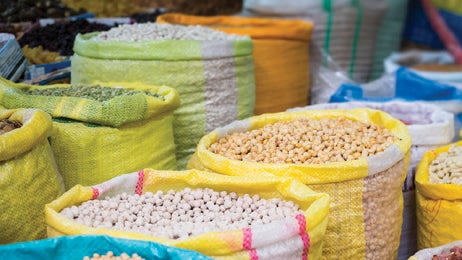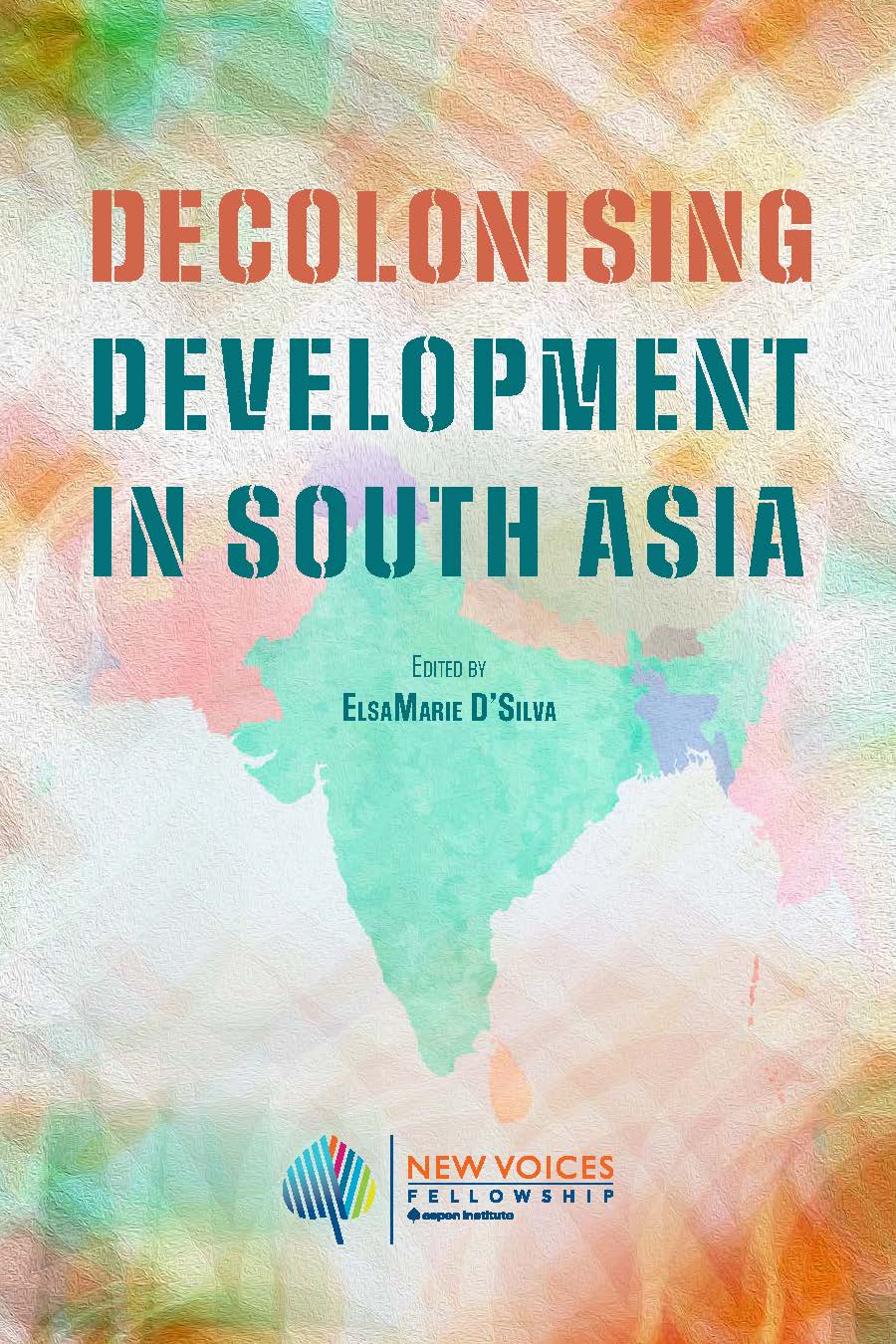A Cycle of Vulnerability and Poverty
A smallholder farmer in Tanzania
Like many others in Northern Tanzania, Lindiwe raises her family on a small farm of three acres (1.2 hectares) of land in Majengo in the Manyara region. She grows corn during the long rains that start in late December and plants beans during the short June rainfalls. Lindiwe grows her crops on a piece of land that has suffered erosion and nutrient depletion (1). Like most smallholder farmers in sub-Saharan Africa who lack access to improved seeds and basic inputs (fertilizer, pesticides), if all goes well, she can expect to harvest around 320 bushels per acre (~2 tons per hectare). However, that assumes no pest or disease outbreaks, limited weeds, and no drought – not to mention the possible challenges presented by conflicts in the area. Lindiwe needs a minimum of 160 bushels per acre (~1 ton per hectare) to feed her family of five. If a trader happens to pass through her village after a surplus harvest, offering fair prices, some of her yield can be sold to generate a little modest income and pay for health and education for the children.
A self-maintaining cycle of low productivity semi-subsistence production
However, Lindiwe’s family faces various risks that often bring their household to the brink of poverty and hunger. The largest local grain buyer, a brewery firm, requires that purchased grain meet strict quality and quantity guarantees at the same time every year in June. Since Lindiwe cannot produce consistent amounts of grain, and she cannot ensure minimum quality standards, it is impossible for her to get contracts. The same goes for others in her village. As shown in Figure 1(a) below, if there is a drought (the major risk to production in the area) or a disease or pest outbreak, the yield can drop below one ton per hectare – less than Lindiwe needs to feed her family until the following harvest.
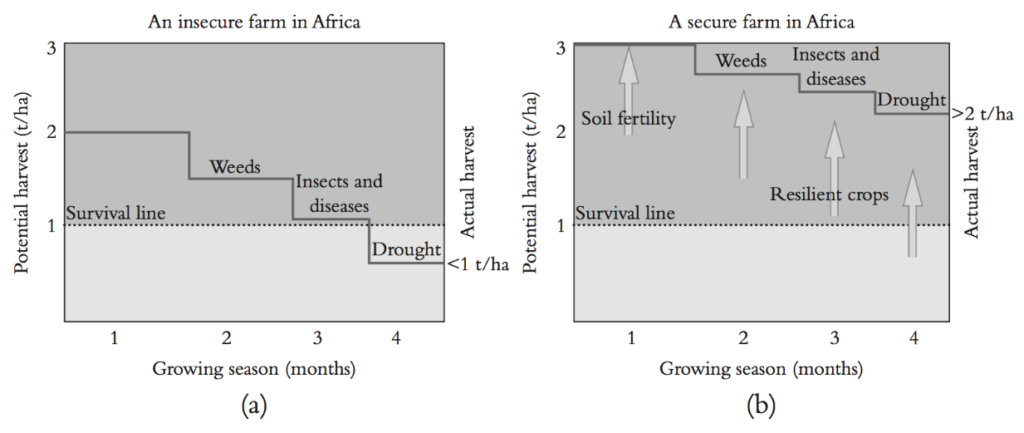
Figure 1. Crop harvest from an insecure (a) and from a resilient (b) farm (2)
As shown in Figure 1(b), with access to fertilizers that temporarily increase soil fertility, hybrid drought tolerant seeds, and some herbicide and pesticides to contain weeds and pests, Lindiwe could produce reliable yields of at least two tons per hectare, even in the event of a mild drought or pest and weed outbreak. This would enable Lindiwe and her family to produce enough to feed themselves, as well as to sell enough grain every year to pay for a more diverse diet, medicines, school fees, and other needs.
However, this scenario is only possible if there is a thriving, stable ecosystem of necessary and affordable goods and support services for Lindiwe to achieve post-subsistence output. The provision of one-off food aid, as discussed later, or fertilizer assistance for a single season, will not create conditions for permanently lifting Lindiwe and her family out of poverty.
Furthermore, poor access to credit inhibits Lindiwe’s economic stability. In order to purchase all the needed inputs from the local agricultural supply dealer, Lindiwe would need a loan from the local bank, which would be guaranteed against her savings. Given that Lindiwe and her cooperative organization do not have any assurance of being able to sell their harvest and do not have any credit history or any training in how to use advanced inputs, she is ineligible for a loan. In fact, Lindiwe would likely not consider applying for a loan, given the large cash collateral required. If the rainfall fails, she might not make enough surplus to repay the loan and its interest, and she is not willing to risk losing the collateral. As weather extremes increase in severity and frequency and rainfall patterns become less certain, Lindiwe and her family remain in a state of semi-subsistence and increasing vulnerability.
Challenges donor-funded initiatives face in breaking the cycle
When there is an extreme drought or pest infestation, Lindiwe and her family may only survive thanks to the generosity of food aid from a donor-funded program. However, such aid is usually a temporary fix at best. Many such donor-funded initiatives fail to implement sustainable, comprehensive partnerships across sectors that will serve the long-term needs of subsistence or semi-subsistence farmers.
The root of this challenge may include traditional food aid itself, which can hinder a region’s ability to recover from a system shock if such aid is not delivered in a contextually appropriate manner, or not paired with support systems to carry the community beyond an initial need. Because of this, traditional forms of aid also have serious potential to cause harm.
An example of this occurred with a food aid program in Sudan, where a significant portion of the population suffers from undernourishment. Some aid agencies were sending food aid in the form of wheat, which is not typically consumed by the rural poor. This had the unintended consequence of benefiting more privileged individuals living in urban areas by lowering bread prices, while also distorting local markets for sorghum and millet which are mainly grown, traded, and eaten in rural communities (3). This instance was a clear mismatch between donor intent and actual need at a local level.
At a time when more NGOs were monetizing food aid, there were numerous examples where program support intended to serve the poor in developing nations ended up in the hands of middle or upper class consumers. In Uganda, for example, there was a case of US food aid being used at a bakery immediately across the street from the US embassy (3). And in Ethiopia, cooking oil from a large monetization program ended up at a Sheraton hotel in Addis Ababa (3).
Further illustrating these challenges, the Center on Conflict and Development at Texas A&M University found that only 5 to 10 percent of the resources allocated in a typical government-funded foreign assistance project directly reach the lives of the impoverished (3). This can result from high transaction fees, numerous levels of administrative overhead and indirect costs, corruption (socially accepted and otherwise), and overall program inefficiency.
The examples are too many to count and go beyond food aid to include short-term or one-off fertilizer provision, improved seeds that fail to grow in a given microclimate, or farm machinery that cannot be easily repaired or fueled. Programs in response to an immediate, near-term need are critical, but they are usually followed with limited or no investment in long-term infrastructure, business and services support, and the knowledge development required for sustained improvement over time.
Comprehensive approaches are required if the development community hopes to break this cycle of semi-subsistence agricultural production, which keeps some 500 million smallholders highly vulnerable to any shock such as a weather-induced crop failure. Breaking the cycle has been the objective of numerous government- and donor-funded initiatives, but many have focused on individual challenges or only provided isolated solutions. For instance, many programs do not address systemic issues and instead serve only individual needs, such as fertilizer and seed subsidy schemes, access to purchasers, subsidized loans or insurance, or access to donor-funded extension services. These programs usually address supply chain vulnerabilities but only on a piecemeal basis. Few donor-funded initiatives to date address all of these needs comprehensively, or succeed in linking them all together in a fully integrated approach to break the semi-subsistence poverty cycle at scale and on a resilient, sustainable basis.
Better solutions are needed and are within our grasp. Especially given the presence of new blended finance tools (such as social impact bonds), increasing connectivity between the public, private, and philanthropic sectors, increased transparency and accountability, new sources of capital (such as the growing field of impact investing) and new forms of innovative partnerships.
Building a Virtuous Cycle Through Inclusive Partnerships
How do we build inclusive and commercially sustainable supply chains?
The alternative to fragmented interventions is to focus on building supply chains that run end to end, from farmers to consumers, and ones that are commercially viable, resilient, and sustainable. As comprehensive access to markets, inputs, and extension services are secured, smallholders can access financial services. In turn, higher production allows increased investment and the resilience of livelihoods, which further secures access to sales agreements for future harvests and increases social welfare. Not surprisingly, the logistical and institutional challenges of aligning the interest and incentives of smallholder farmers, financial institutions, input providers and others explains why few have tackled this complex issue at a country-wide scale.
However, successful and promising models do exist, such as these two integrated approaches.
A. Building supply chains in challenging environments
There have been many initiatives that succeed in supporting resilient supply chains at a local or community level. Although new regional and country-wide initiatives will require a broader scope, this program provides insights on how to develop a comprehensive program in a conflict area. In 2010, the U.S. Department of Defense launched an agricultural redevelopment and counterinsurgency program in the war-torn province of Herat, in western Afghanistan. In an area where a significant portion of the rural population was facing chronic malnourishment, this strategy prioritized four concurrent investment programs addressing critical gaps across the agricultural supply chain (3).
The design of these programs was community-led and prioritized, and supported by more than a year of preliminary research, analysis, and on-the-ground fact-finding. These programs established an extensive series of partnerships, beginning with investments in permanent irrigation infrastructure for local farmers to double crop and to grow through excessive heat and dry spells. This investment included necessary spare parts, operation and maintenance training, and a permanent connection to a service provider, while also training and preparing the farmers to move from subsistence and market-limited to market-engaged.
The program led to an increase in production, and that created demand for new opportunities for farmers to market their crops. This demand was immediately met by new, nearby food processing facilities. These facilities were built as women-owned local enterprises which provided employment opportunities. They also included a hot house for growing fruits and vegetables to supplement revenue year-round. The female-owners became trained technicians assuming responsibility for the full spectrum of business operations, and the equipment and processing procedures were ISO certification-ready. The processing centers were further linked to new farmer cooperatives in the province, which organized more than 1,400 farmers into six active producer associations each with access to wholesalers and regional markets, new dry and cold storage, lines of credit (with potential first-loss coverage), and forward contracting opportunities.
Finally, the collaboration undertook a major construction project, completing the long-awaited Herat University Agriculture College facility. This included new and regionally relevant food and agricultural science courses (integrating male and female students). In partnership with the local and provincial ministries of agriculture, new university extension agents were trained to support the knowledge base required for the long-term success of the overall program. And, among other things, the investment installed the region’s only advanced commodity and soil testing laboratory, drastically reducing the cost and time required to obtain critical feedback for research and for the local agricultural industry.
This comprehensive approach engaged with local city officials and the provincial government to ensure buy-in and developed policies and resources to support the initiatives over the long-term. The partnership included the Defense Department, donors, private sector investors, local communities, NGOs, and universities – both in Afghanistan and in the U.S. Ultimately, every program dollar expended, each capital project constructed, and every piece of equipment procured resulted from community guidance. Further, ownership was transferred to the community upon program completion. Opium cultivation in Herat decreased between 11% and 20% in the year following the complete implementation of this partnership, although this was due to numerous factors, both related and otherwise (4).
B. The Patient Procurement Platform – a new “PPP”
With $1 billion USD of annual purchases in staple grains, the UN’s World Food Program (WFP) has set an important target to raise the share purchased from smallholder farmers from less than 2% to 10% before 2020. To achieve this target, the WFP first established the Purchase for Progress (P4P) initiative, originally piloted in 2007 with the Howard G. Buffett Foundation and the Bill & Melinda Gates Foundation. Building from this, in 2016 WFP launched a major new initiative called the Patient Procurement Platform (PPP). The launch of the initiative was accompanied by the formation of an alliance between the banking sector (Rabobank), input companies (Bayer, Syngenta, Yara), NGOs (AGRA, GrowAfrica), and international organizations (WFP, IFC), encompassing all players in a typical supply chain. The objective of the PPP is to develop and implement new mechanisms linking smallholders to regional and international supply chains in 25 countries in sub-Saharan Africa, South Asia, and Latin America, through a comprehensive supply chain approach.
A forward looking approach to development and building food security
The Patient Procurement Platform stands out from previous attempts to generate self-maintaining and inclusive supply chains with smallholder farmers because of the scale and scope of its ambition. Past evidence reveals that development initiatives relying mainly on government or donor-based subsidies without linkages to local market dynamics fail to scale up and become self-sustainable (5). In effect, the lack of market-based rationale, combined with an inevitable drawdown of donor resources, gives no opportunity for substantial scalability. Such long-term dependence on donors leaves development projects vulnerable to resource allocations shifts and fails to develop resilient systems based on the complexity of local constraints and opportunities.
The PPP is based on the opposite rationale. By embracing sustainable market-based mechanisms, the PPP is able to integrate different local, regional and national contexts. The PPP approach shifts away from the traditional sourcing model (see Figure 2, left panel – below) which has excluded smallholder farmers and proven less reliable for global actors in the food supply chain. The PPP instead spurs the development of sustainable, comprehensive and vertically integrated supply chains (see Figure 2, right panel – below).
As opposed to a logic based solely on geographic diversification of sourcing from grain buyers (e.g. manufacturing companies or traders), the PPP introduces market-based commercial incentives for buyers to strengthen and build long-term contractual relationships with committed farmers and cooperative organizations. This vertically structured value chain is in contrast to supply chains in which sourcing is carried out regardless of the viability of the underlying producers. In contrast, the PPP supply chains are based on the shared interest of the entire value chain, from end buyer to traders to producers. PPP supply chains incorporate a suite of coordinated support systems and services to ensure the resiliency and viability of specific sourcing sites – i.e. production sites B and F in the Resilient Sourcing Model below. This latter approach involves an active and long-term engagement with buyers, other key value chain actors and producers in order to strengthen overall supply chain resiliency and therefore ensure reliable and cost-effective long term agricultural commodity production.
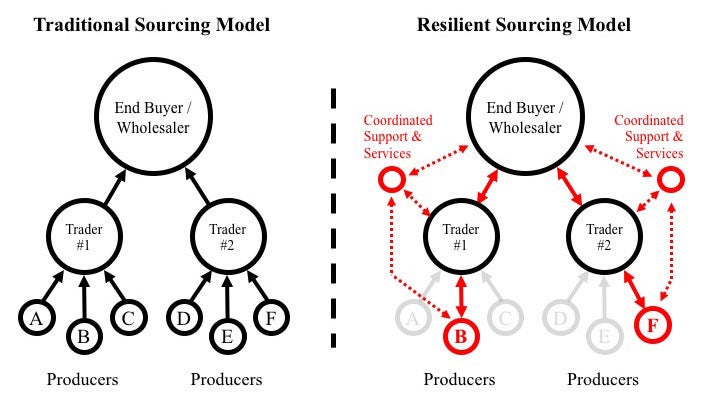
Figure 2. Schematic representation of a traditional model of grain sourcing from multiple producing sites (left panel) and model of a new resilient supply chain (right panel) with multiple, strengthened, vertically integrated sourcing sites, and coordinated support and services for producers (6).
Reactionary to Resiliency: Supply Chain Vulnerability
Disruptions in food supply chains
Key to the new sustainable and resilient PPP approach is risk management. Current strategies adopted across the food and fiber industry have focused on maximizing the reactive capacity to cope with disruptions through mainly geographical diversification of mainstream portfolio hedging techniques. However, the exposure of the food and fiber sector to supply chain disruptions is significant, and such risk management strategies must go beyond reactionary and toward resiliency. More than half of disruptions are caused by weather events such as storms or droughts, while approximately a quarter each are due to trade or political disruptions. Recent examples of the latter include Unilever’s annual loss of $415 million USD in 2014 due to extreme cold and floods (7) or Cargill’s 12 percent drop in profit in the 3rd quarter of 2014 following the heatwave and drought in the American midwest which caused corn yields to fall (8). Supply chain disruptions will increase in frequency and severity alongside more severe extreme weather events and changes in weather patterns amplified by global climate change as projected in Figure 3.
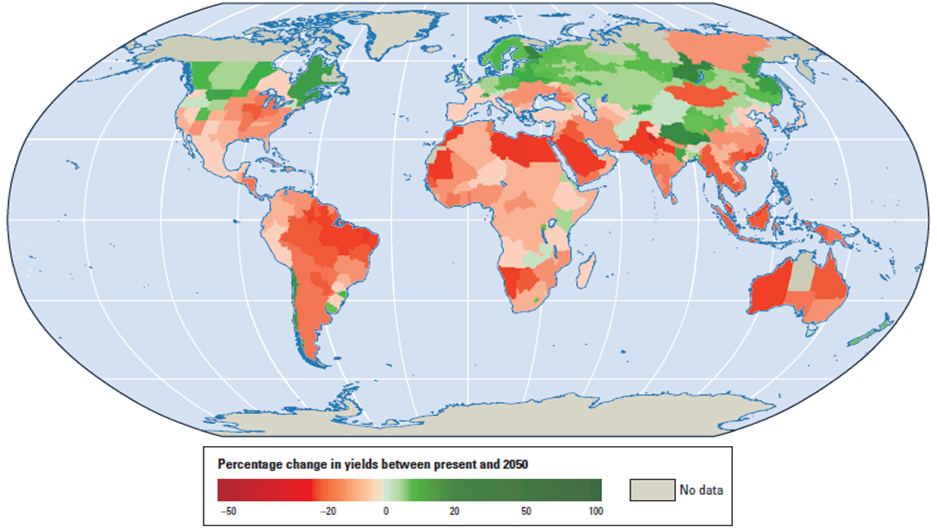
Figure 3. Percentage yield change between present and 2050 in an average climate change scenario (9)
Risk sharing to bring smallholders in resilient supply chains
While weather-driven crop production losses can be withstood by production systems in developed countries, their effects can be devastating on supply chains relying on vulnerable and cash constrained smallholder farmers. Recently, a methodology to quantify the risk exposure of crop production to weather variability in different adaptation scenarios was put forward (10). Based on this methodology, a project entitled Weather Index-based Risk Services (WINnERS) is being carried out to develop and implement new risk sharing mechanisms relying on earth observation and granular crop modeling. The WINnERS initiative is funded by the European Union and includes a consortium of four European universities, along with a global reinsurance broker (WillisTowersWatson), working together with the World Food Program, the Rabobank, the International Finance Corporation (IFC), and a major retailer (Sainsbury’s). This collaboration aims to protect all actors of the Patient Procurement Platform across supply chains from disruptions driven by weather, and illustrates the type of model required if we are to bring smallholder famers into sustainable regional and global supply chains.
Conclusions
There is a pressing need to double food production
Currently, almost a billion people are stricken by chronic hunger and malnutrition, and global food production will need to double by 2050 to meet global demand. While important gains of agricultural productivity were achieved in post-World War Europe, followed by the Green Revolution in the 1960’s and 1970’s in Asia and Latin America, yields of key staple crops – maize, wheat, rice, and soybeans – have not improved, have stagnated, or have decreased in 24 to 39 percent of their growing areas (11).
This need is especially acute in SSA
In order to meet this demand, increasing yields in low-productivity and stagnating areas such as sub-Saharan Africa holds one of the keys to reaching global food security. It has been shown that modest improvements in management and access to technology could easily double yields in sub-Saharan Africa (2,12,13). However, achieving the doubling of yields at scale and sustainably on a continent where 80% of agricultural land is managed by smallholder farmers distributed across more than 50 nations creates numerous challenges. The creation of innovative, sustainable and commercially viable supply chains that enable the inclusion of smallholders in fair and efficient markets is essential. In this context, WFP’s Patient Procurement Platform objectives and rationale provide a promising path.
Action and funding needed now
There is a need for a sharp increase in investment in agricultural development. The Food and Agriculture Organization estimates that the annual gross investment in developing countries’ agriculture systems needed to achieve the required increase in food production is over $200 billion USD (14). Even with today’s average investment of $142 billion USD annually (14), an increase of roughly 50% investment would still be needed. The magnitude of increased public and private spending in agricultural supply chains in developing countries will require strong political leadership supporting changes in national and global resource allocation. Equally, with an estimated $6.5 billion USD (15,16) spent in overseas development aid (ODA), reallocation and increased efficiency of donor-aid programs is necessary. Meeting these needs over the long-term will also require private sector engagement and investments in agricultural production.
If society is to eventually end the cycle of vulnerability and poverty plaguing subsistence farmers like Lindiwe in Tanzania, then such investments must prioritize the inclusion of smallholder farmers in regional and international supply chains. Moreover, leading actors across supply chains must be willing to invest at necessary levels over longer time horizons while also sharing success through new comprehensive, collaborative, and contextually appropriate approaches to solving our global hunger challenges.
Image credit: WFP/Ranak Martin
References
- Nkonya, E. Anderson, W., Kato, E., Koo, J., Mirzabaev, A., von Braun, J. and Meyer, S. (forthcoming). Global cost of land degradation. In: Nkonya E. Mirzabaev A. and von Braun J. (eds) (2015). Economics of Land Degradation and Improvement. Springer, Netherlands
- Conway. One Billion Hungry: Can We Feed the World? (Cornell University Press, Ithaca, New York 2012)
- Buffett. 40 Chances: Finding Hope in a Hungry World (Simon & Schuster, New York, NY 2013)
- The Guardian. Sourced from the Government of Afghanistan – National Monitoring System Implemented by the UNODC, November 2013 (https://www.theguardian.com/world/2013/nov/13/afghanistan-record-opium-crop-poppies-un, accessed 30th September, 2016)
- Munk. The Idealist: Jeffrey Sachs and the Quest to End Poverty (Doubleday, New York , 2013)
- Sadler. The role of resilient supply chains in the face of climate change (Resilient supply chains: farmers and food industry tackle the shared challenge of climate change, 19th October 2015)
- Yeo. Climate action is “only way” to grow economy – Unilever CEO. (climatechangenews.com, 14th April 2014)
- Elmquist. Cargill earnings decline on effects of rail and drought (Bloomberg Business, 7th August 2014)
- C. Nelson. Advancing Global Food Security in the Face of a Changing Climate. (Chicago Council on Global Affairs, Chicago, May 2014)
- Chavez, G. Conway, M. Ghil, M. Sadler. An end-to-end assessment of extreme weather impacts on food security. Nature Climate Change. doi: 10.1038/nclimate2747 (2015)
- D.K. Ray, N. Ramankutty, N.D. Mueller, P.C. West, J.A. Foley. Recent patterns of crop yield growth and stagnation. Nature 3, 1–7 (2012)
- D. Mueller, J.S. Gerber, M. Johnston, D.K. Ray, N. Ramankutty, J.A. Foley. Closing yield gaps: nutrient and water management to boost crop production. Nature 490, 254–257 (2012).
- Twomlow, D. Rohrbach, J. Dimes, J. Rusike, W. Mupangwa, B. Ncube, L. Hove, M. Moyo, N. Mashingaidze, P. Mahposa. Micro-dosing as a pathway to Africa’s green revolution: evidence from broad-scale on-farm trials. Nutr. Cycl. Agroecosyst 88, 3–15 (2010).
- How to Feed the World in 2050 – High Level Expert Forum (2009)
- Detailed final 2014 aid figures released by OECD/DAC (http://www.oecd.org/dac/stats/final2014oda.htm, accessed 13th January 2015)
- A total $137.2 billion USD was spent by OECD/DAC countries as overseas development aid in 2014, of which 4.7% was allocated to agriculture and food security development.
